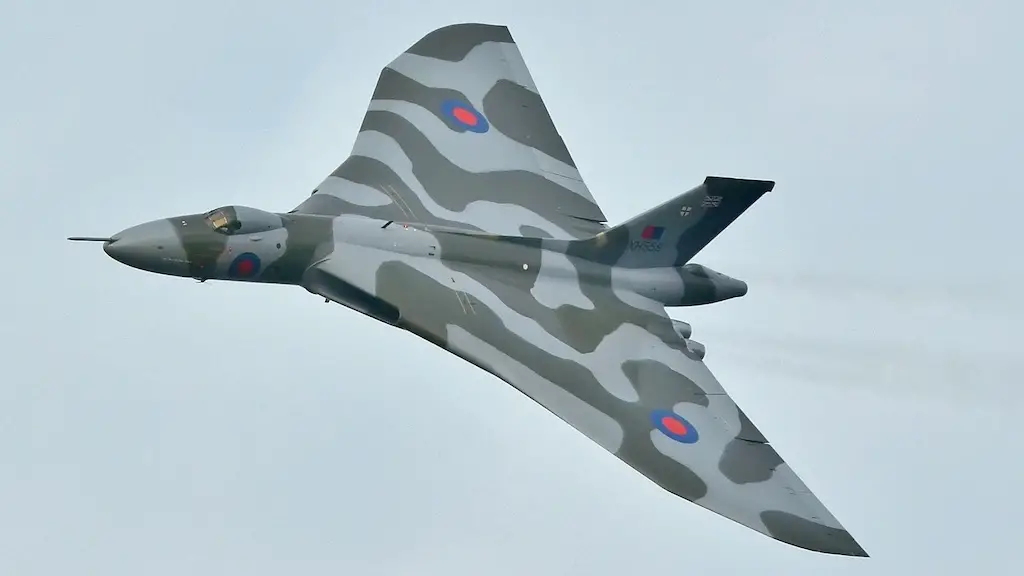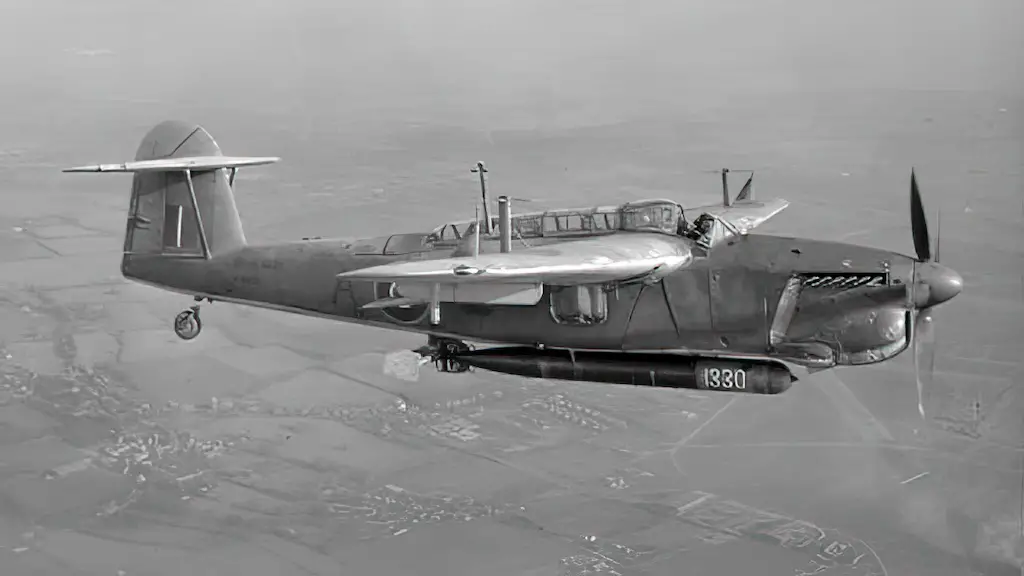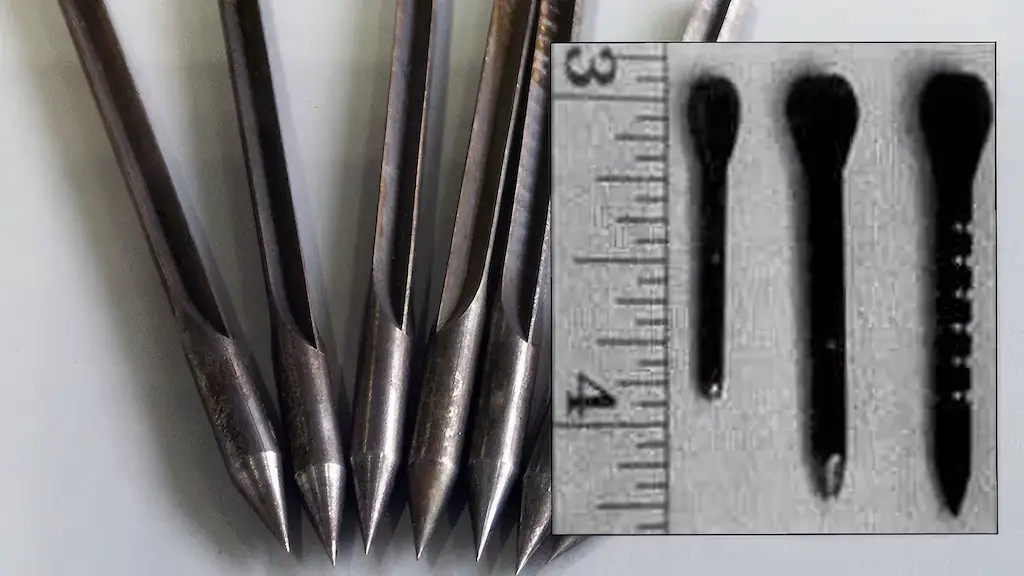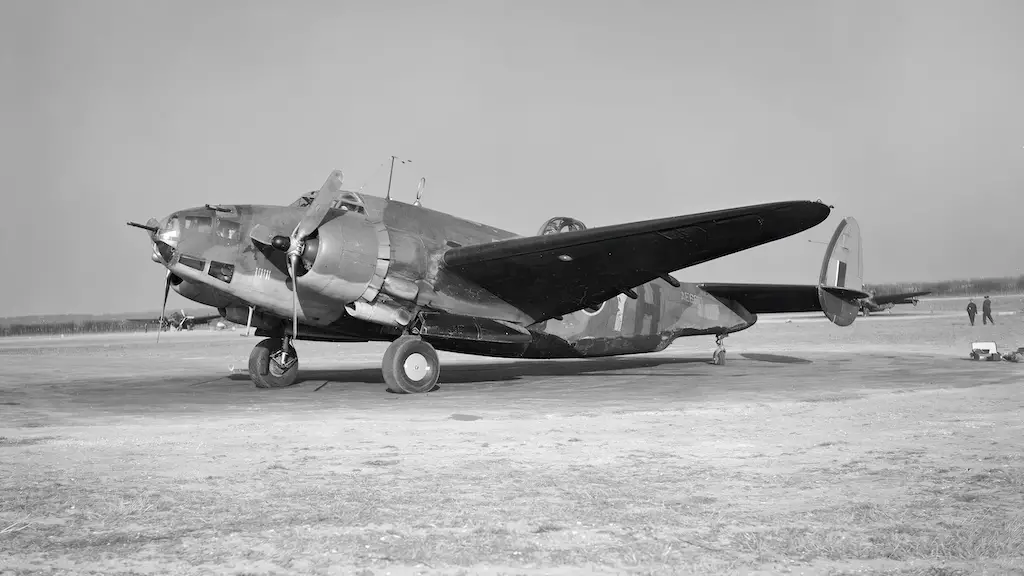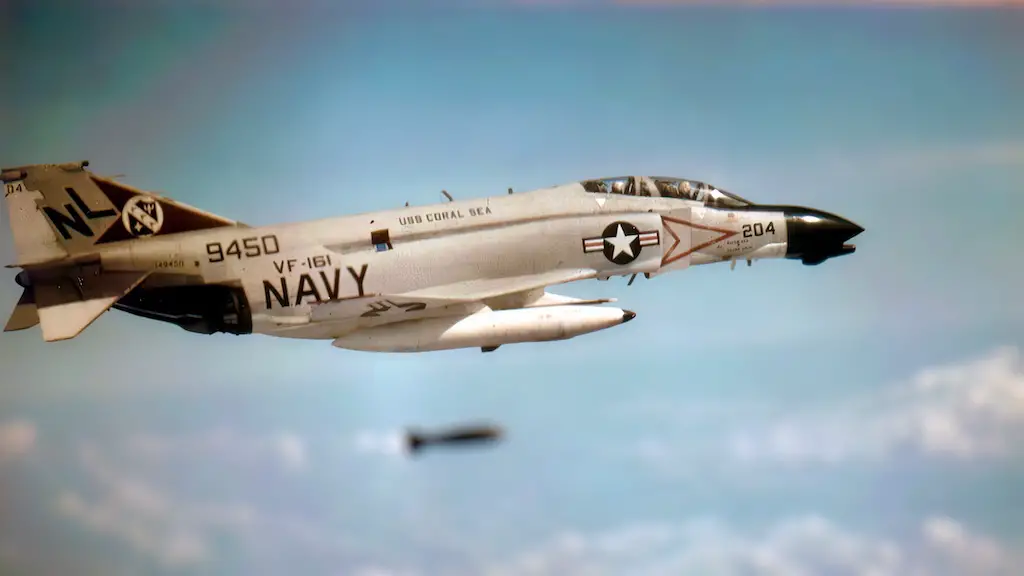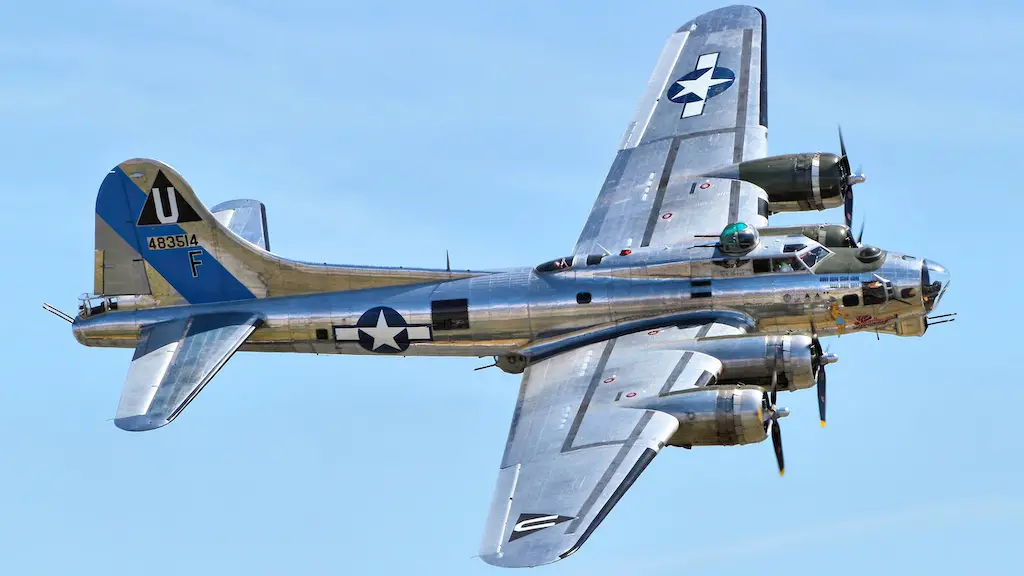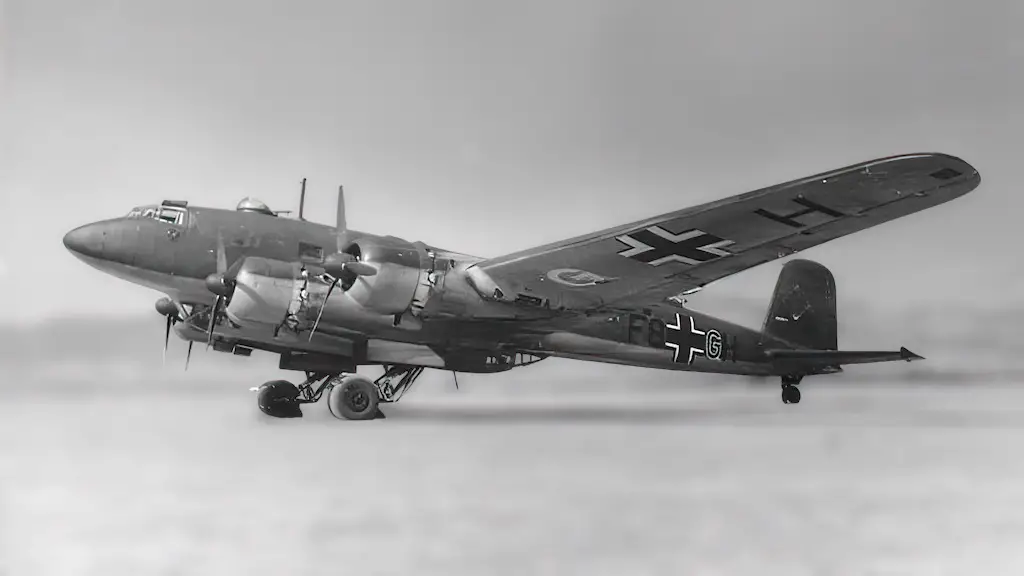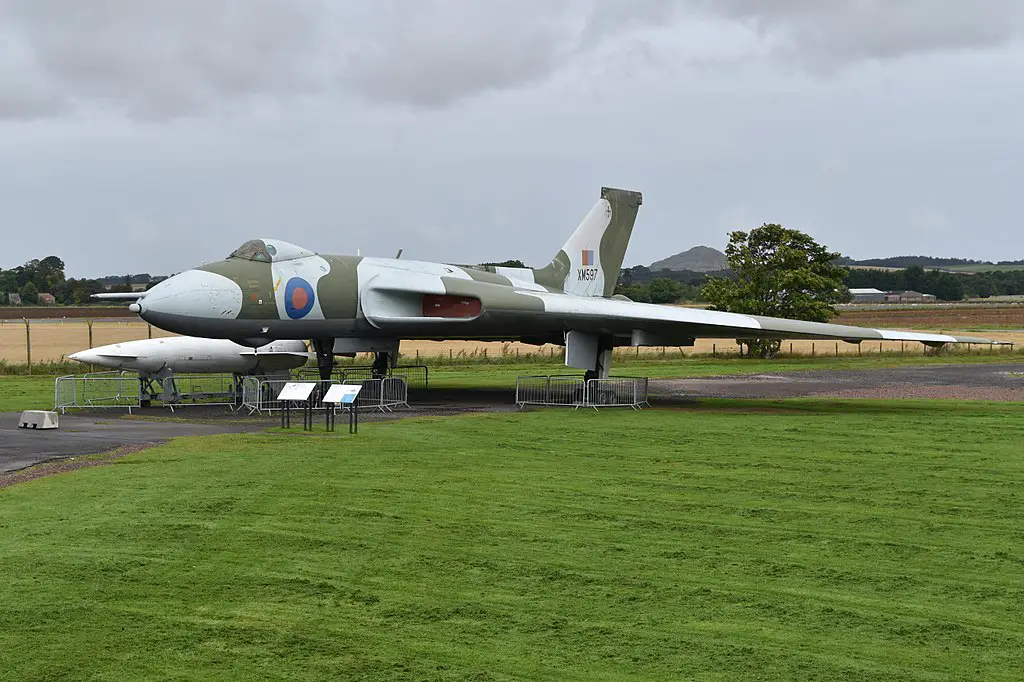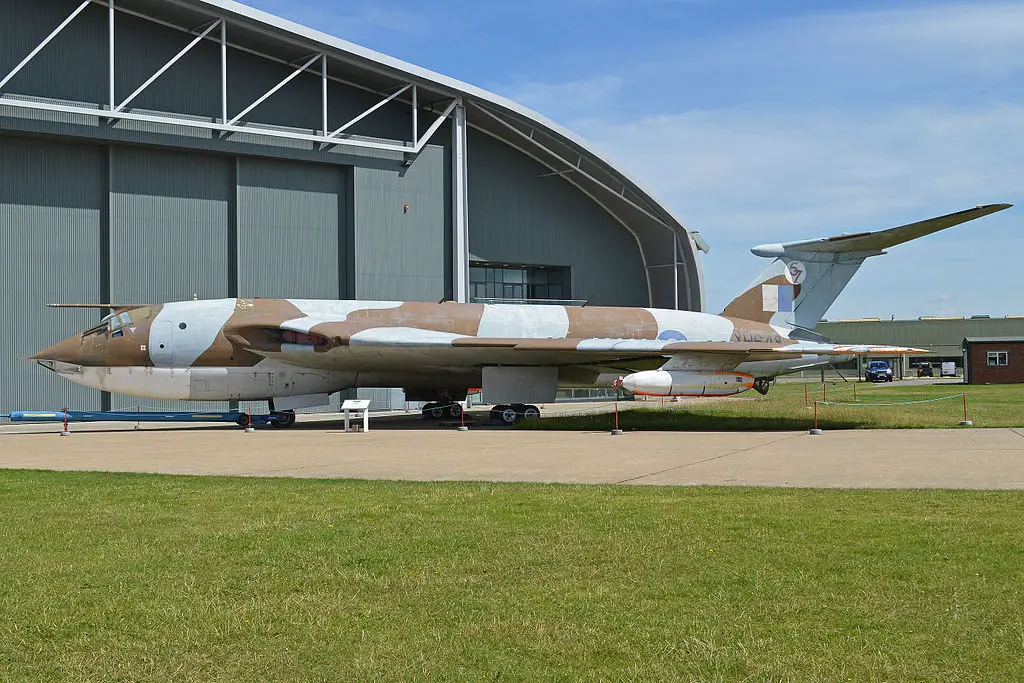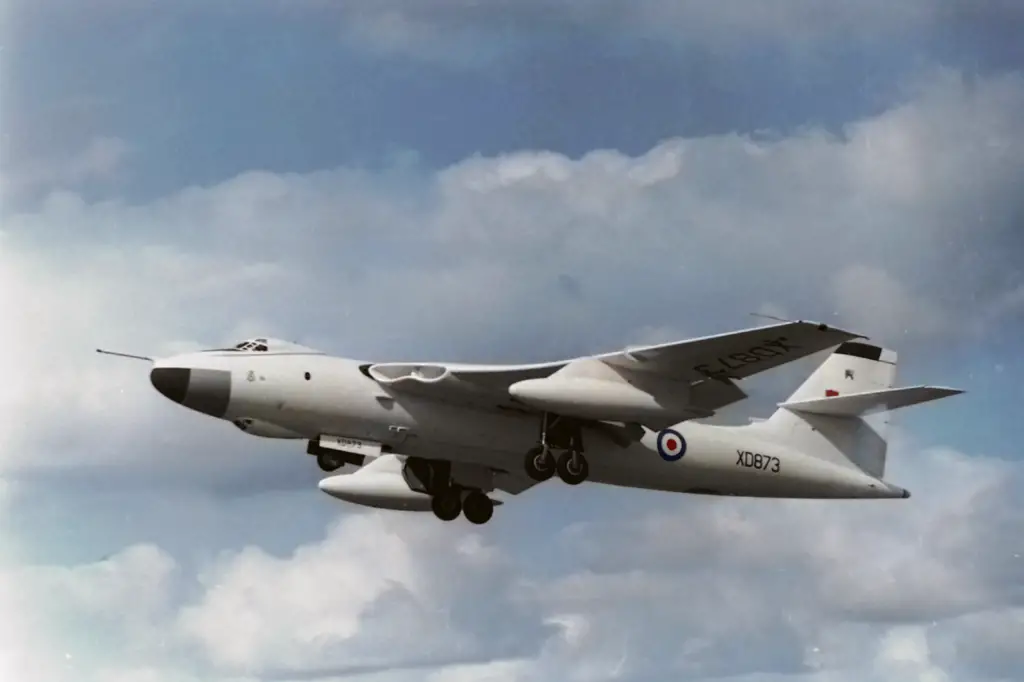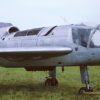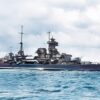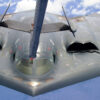In the late 1940s the UK set a goal of creating a fleet of strategic bombers to establish its air component of nuclear deterrence in the kindling Cold War with the Soviet Union. Several British companies took up the task, producing the trio of Vickers Valiant, Handley Page Victor, and Avro Vulcan collectively known as V-bombers. Without any doubt the Avro Vulcan, which first flew in August 1952, was the most radical and innovative among these three designs. It was also the most produced one, for many years forming the backbone of British airborne nuclear force.
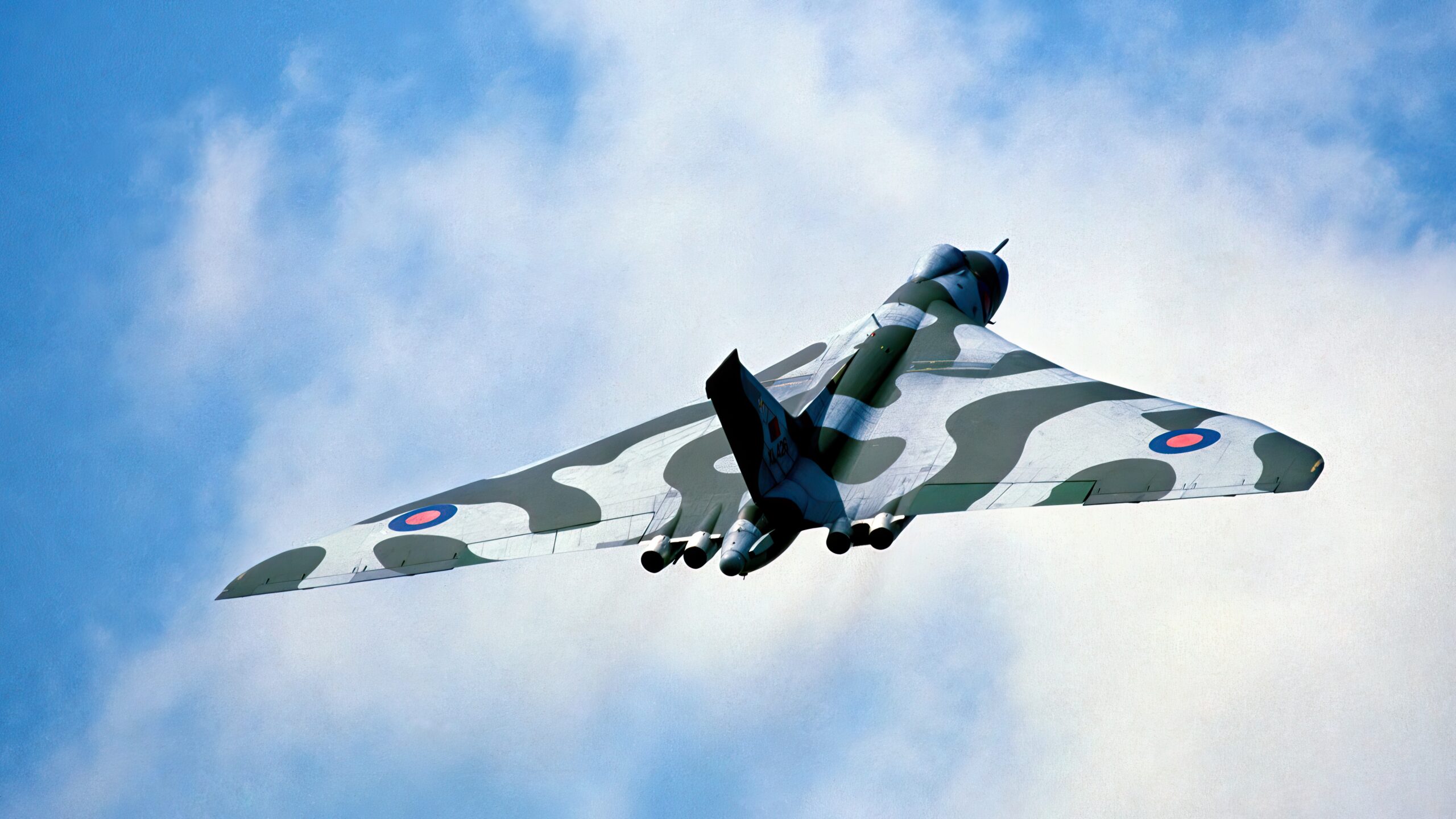
The howling “Tin Triangle”
Avro Vulcan was the first jet bomber to utilize the delta wing concept, which earned it a moniker “Tin Triangle”. While the aircraft’s early variant, the B.1, featured a pure delta, the later B.2 variant’s wing had a curved leading edge. As the B.2. came to be the most extensively produced version, the characteristic curved delta wings spanning 111 ft have become the Vulcan’s signature feature.
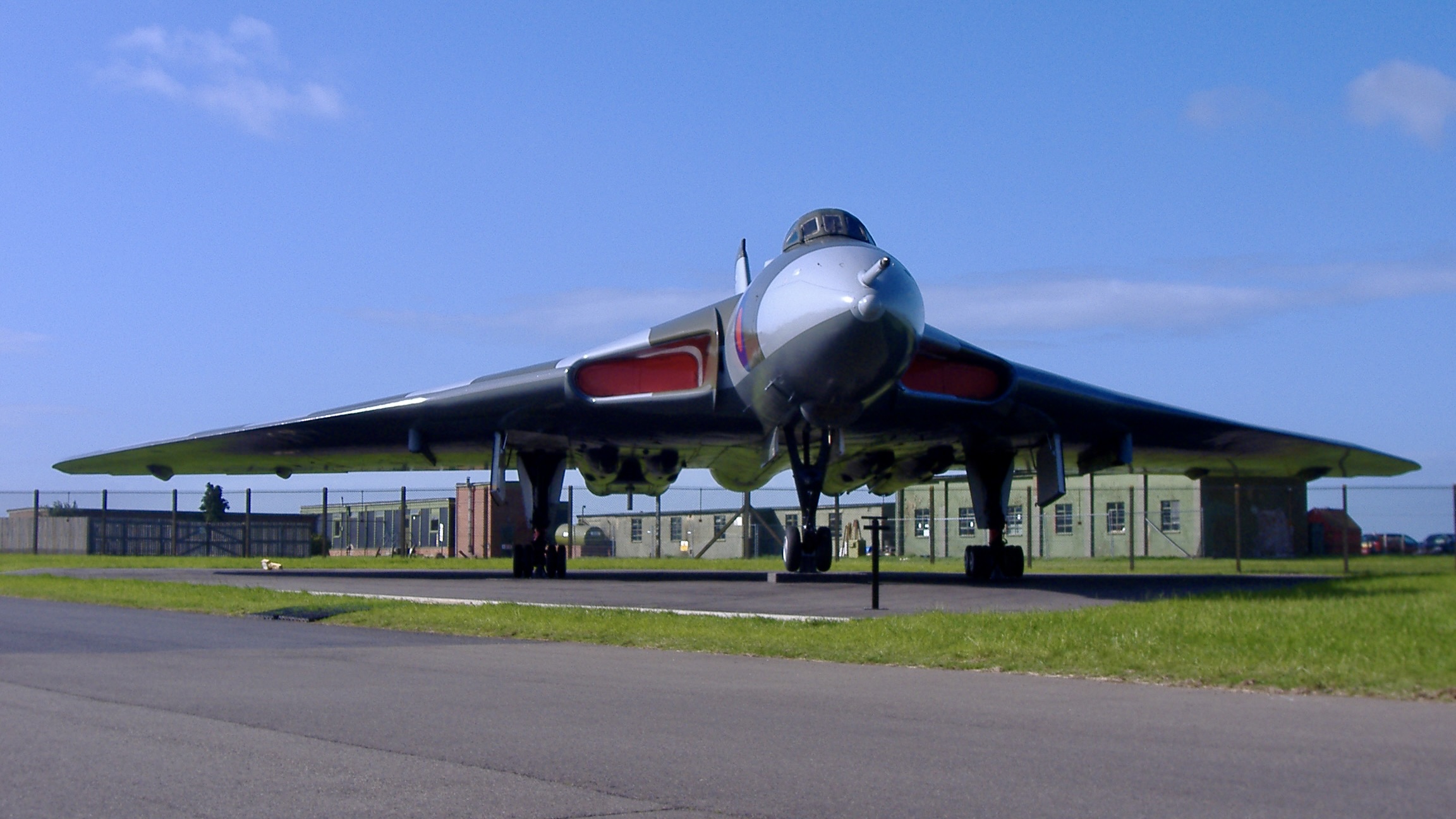
The Vulcan was powered by four Rolls-Royce Olympus engines buried in the wings. These power plants made a very characteristic high-pitched roar, due to which the Vulcan also came to be known as a “howling” bomber. Later variants of this engine powered the Concorde airliner.
While capable of carrying sizeable nuclear bombs or missiles, the Vulcan did not have any defensive armament. In a combat situation its crew of five would pin all hopes on the aircraft’s high speed and maneuverability. And Vulcan was, indeed, quite agile and nimble for a strategic bomber. It could make a full roll and boasted a top speed of Mach 0.96.
A nuclear-capable globetrotter
In the 1950s Vulcans carried free fall nuclear bombs, including Britain’s first nuclear weapon, the Blue Danube. As the advances in Soviet air defenses became evident, they were modified to carry the Blue Steel nuclear armed standoff missiles. Vulcans’ inventory also included WE.177B parachute-retarded gravity nuclear bombs. At the hottest moments of the Cold War, such as the Cuban Missile Crisis, Vulcans stood on four-minute alert, ready to take action in concert with the US Air Force Strategic Air Command in case of a nuclear attack by the Soviet Union.
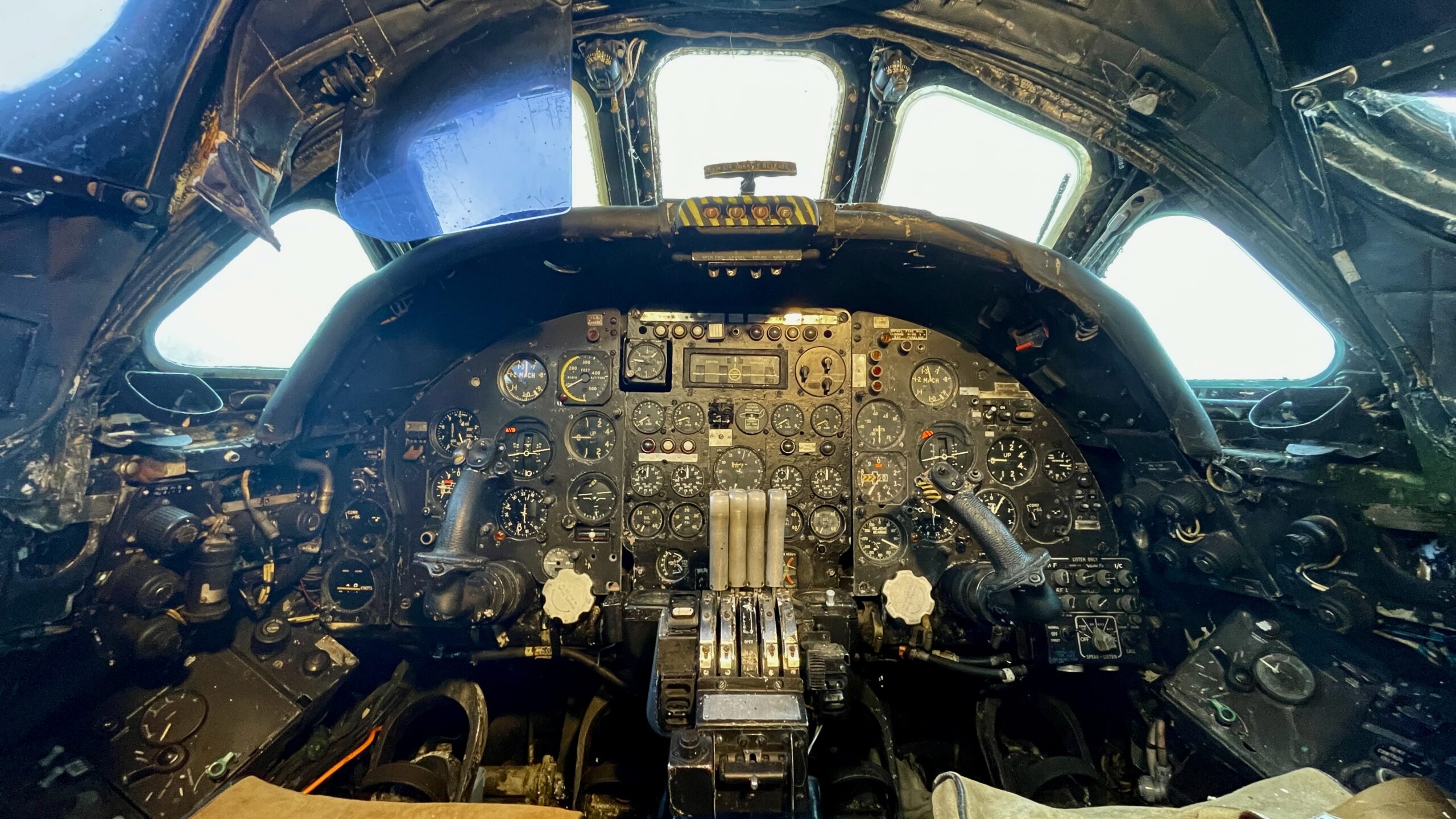
Alongside operating from bases in the UK, Vulcans, as well as other V-bombers, often made visits to overseas territories and other Commonwealth countries as a show of support. These included visits to Singapore, Australia, New Zealand, and the US, as well as several years long permanent deployment at RAF Akrotiri in Cyprus.
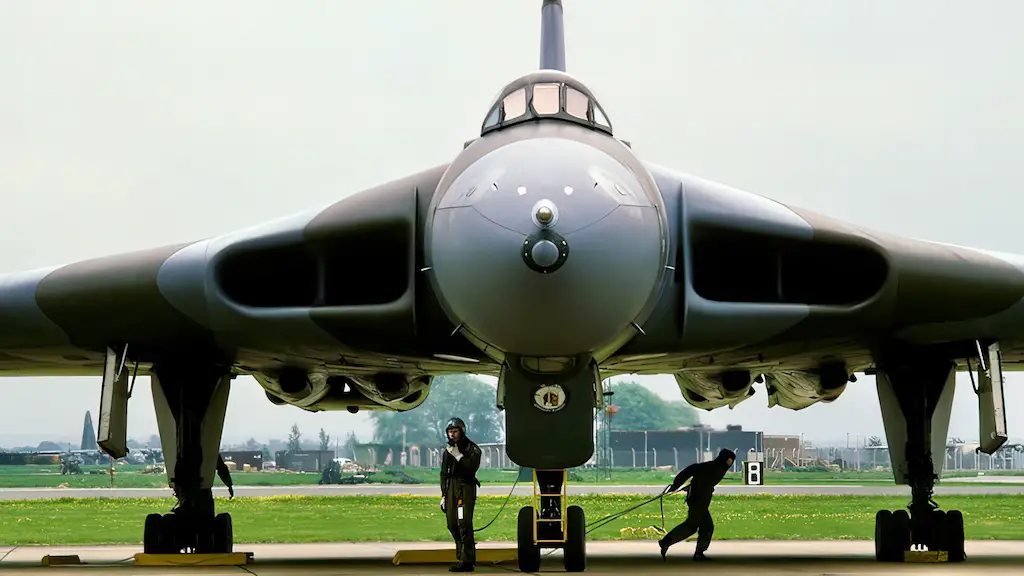
Trying other roles
As the importance of strategic bombers waned due to the development of submarine-launched ballistic missiles, the production of Vulcans ended in 1965. And the already manufactured planes were increasingly adapted for other roles. First of all, these were conventional bombing missions, but six airframes were also converted for aerial refueling, and nine for maritime radar reconnaissance. Many of those that continued to be used as bombers also underwent several upgrades and modifications throughout their service lives.
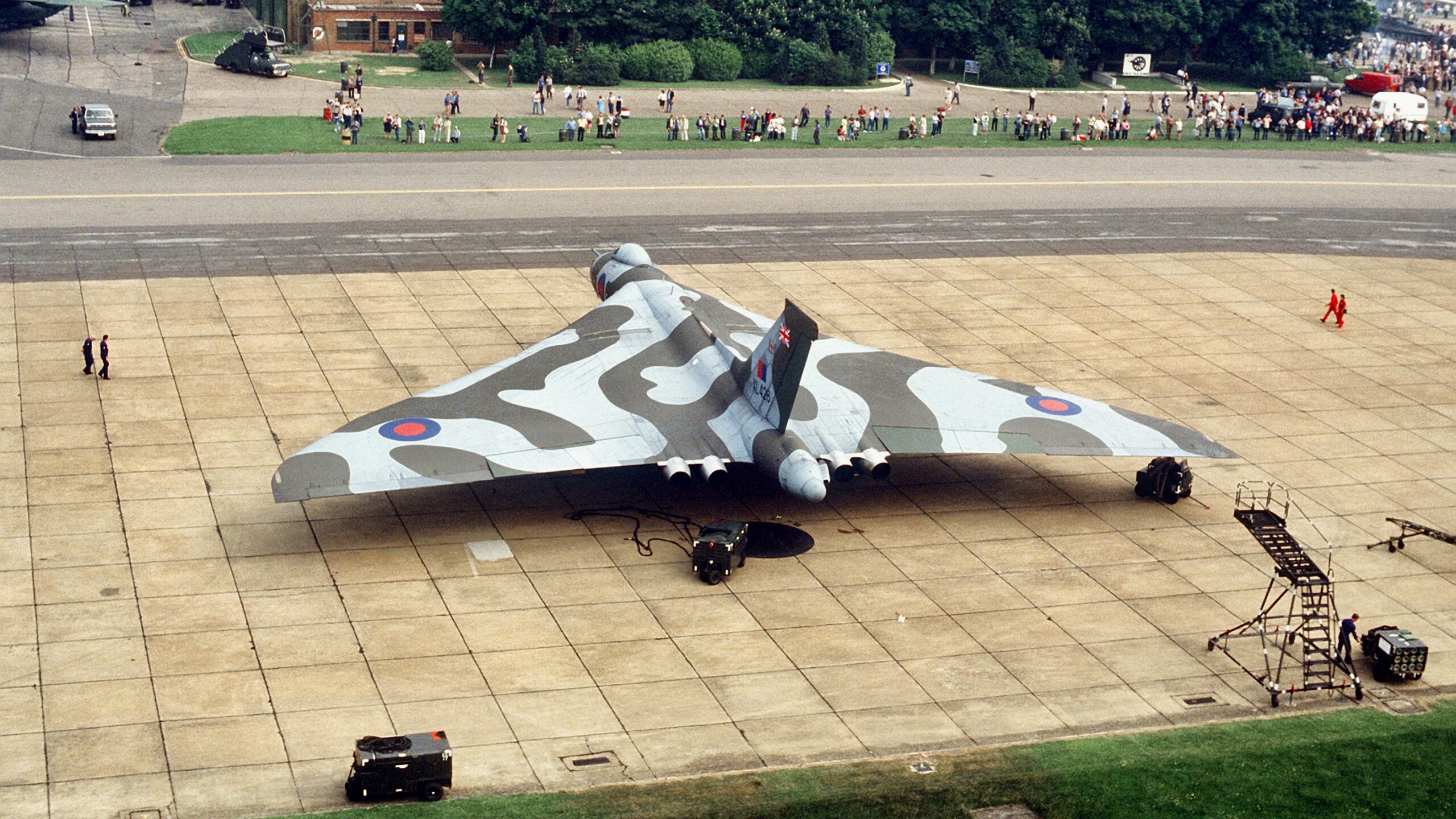
Black Buck missions
As a conventional bomber, Vulcan saw action during the Falklands War, carrying out the longest-range bombing raids at the time. On May 1, 1982, a single Vulcan pounded the runway at Argentine-occupied Port Stanley airfield with 1000-lb bombs, rendering it unusable for high-speed jets.
To complete that mission, it flew nearly 8,000 miles over the Atlantic Ocean from Ascension Island to Falklands and back. Several more missions targeting the airfield and Argentine radar installations followed. To cover such huge distances with a full bomb load or anti-radar Shrike missiles under wings, Vulcans had to rendezvous with Victor tankers several times on the way.
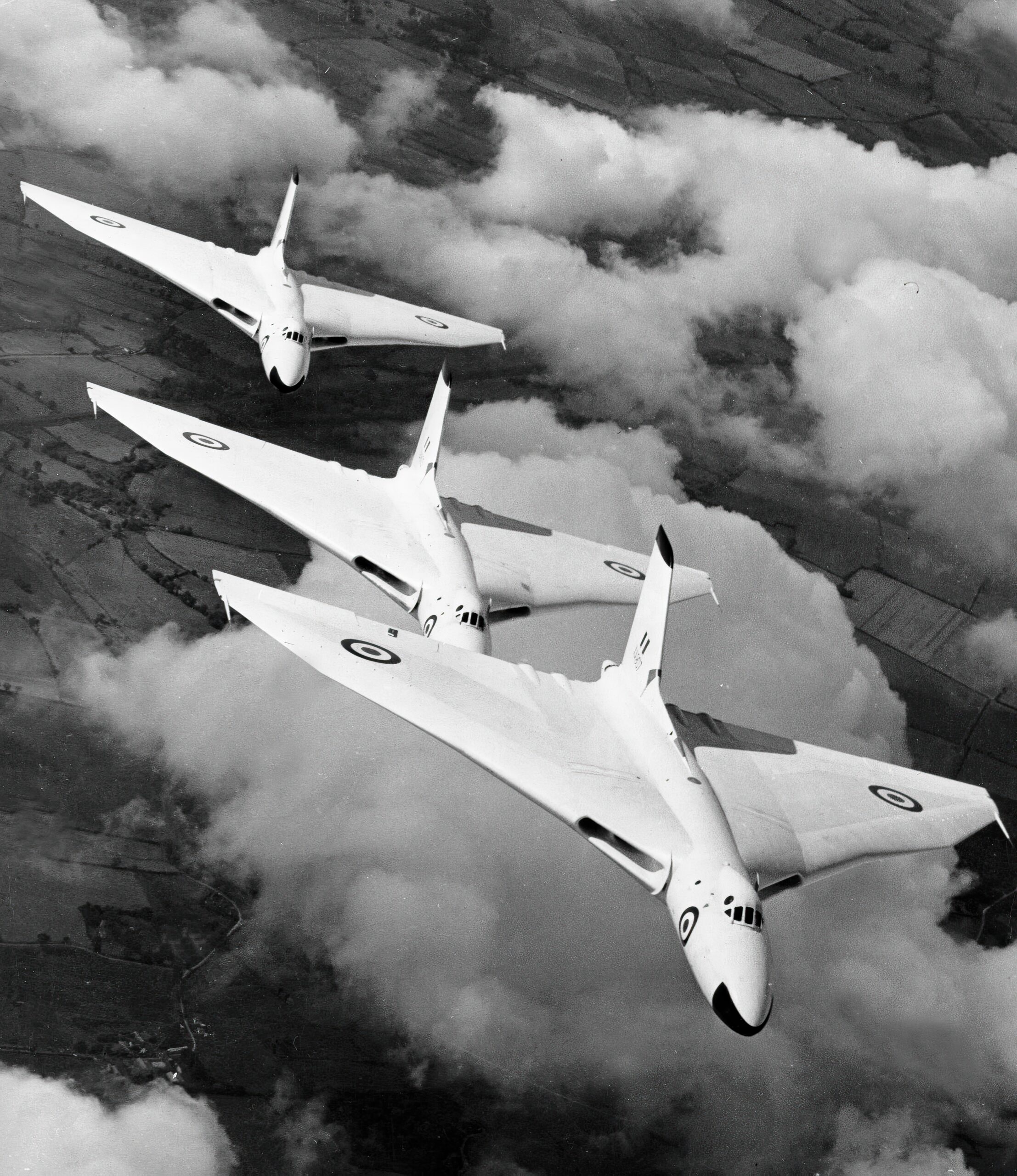
None of these bombers was lost to Argentinian air defenses. In particular owing to the aircraft’s powerful ECM system jamming enemy radars. However, one Vulcan had to divert to Brazil after its probe broke in the course of in-flight refueling. Following a safe landing with last drops of fuel in the tanks, the bomber and its crew were interned until the end of the war.
Ironically, Argentina had asked the UK to sell it some Vulcans less than a year before the conflict. And the British actually considered selling a single aircraft. But the negotiations never materialized into an actual deal.
The last Vulcans left active service in 1984. However, RAF went on flying the type as part of the Vulcan Display Flight until 1993. And with 19 out of 134 production aircraft still out there in various museums, including three in flight condition, the Vulcan has displayed an enviable survival rate.

